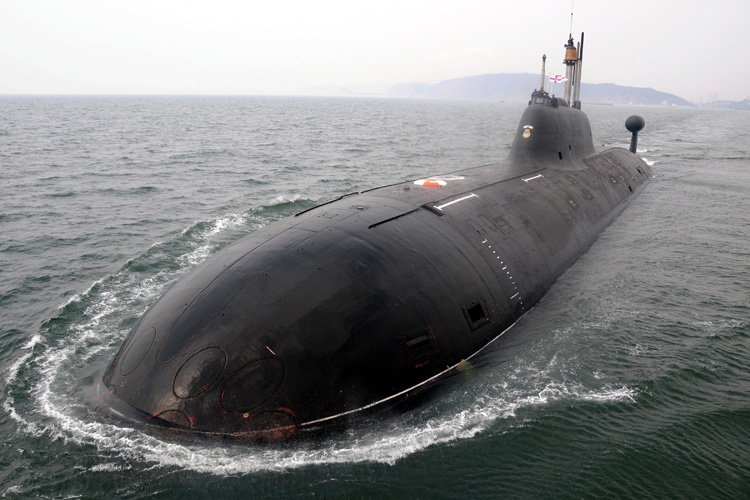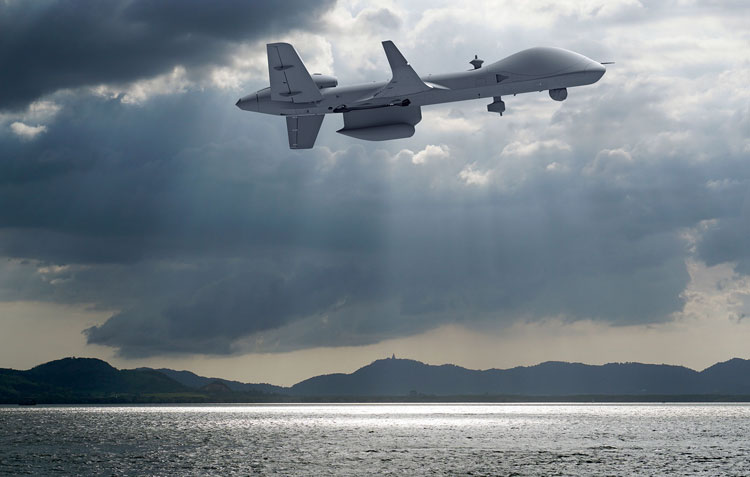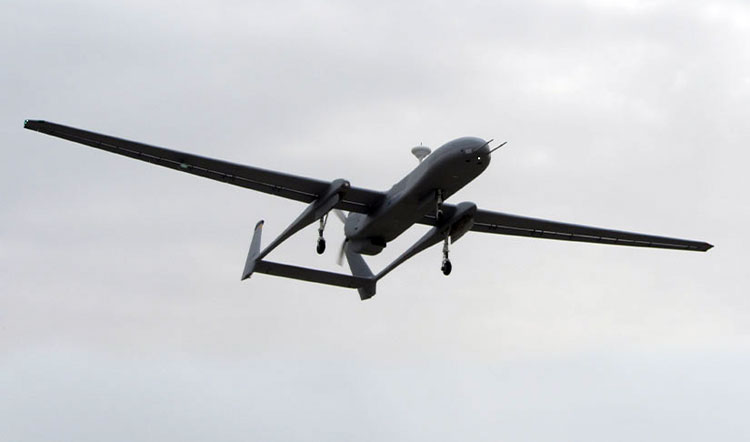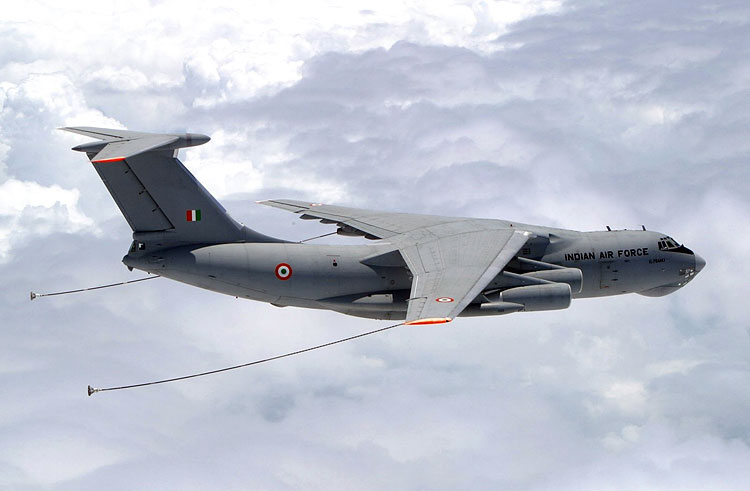INDIAN ARMED FORCES CHIEFS ON OUR RELENTLESS AND FOCUSED PUBLISHING EFFORTS

The insightful articles, inspiring narrations and analytical perspectives presented by the Editorial Team, establish an alluring connect with the reader. My compliments and best wishes to SP Guide Publications.

"Over the past 60 years, the growth of SP Guide Publications has mirrored the rising stature of Indian Navy. Its well-researched and informative magazines on Defence and Aerospace sector have served to shape an educated opinion of our military personnel, policy makers and the public alike. I wish SP's Publication team continued success, fair winds and following seas in all future endeavour!"

Since, its inception in 1964, SP Guide Publications has consistently demonstrated commitment to high-quality journalism in the aerospace and defence sectors, earning a well-deserved reputation as Asia's largest media house in this domain. I wish SP Guide Publications continued success in its pursuit of excellence.
- Operation Sindoor: Resolute yet Restrained
- India’s Operation Sindoor Sends a Clear Message to Terror and the World – ‘ZERO TOLERANCE’
- Japan and India set forth a defence cooperation consultancy framework, talks on tank and jet engines
- Terrorist Attack in Pahalgam in Kashmir: Unfolding a long surgical war against PAK
- Lt General Pratik Sharma takes over Command of Indian Army's Northern Command
Plugging Armed Forces Criticalities
Armed Forces are looking at leasing more military equipment and platforms from foreign countries to plug critical operational deficiencies
 |
The Author is Former Director General of Information Systems and A Special Forces Veteran, Indian Army |

Leasing weapon platforms and military equipment from abroad is practiced world over, especially by developing countries faced with security threats but without requisite indigenous defence industry. India has been leasing submarines from Russia over the past several years. In March 2019, India signed a $3 billion contract for the lease of an Akula-1 class nuclear-powered attack submarine from Russia for a period of 10 years. To be renamed INS Chakra III, this is the ‘third’ Russian nuclear attack submarine to be leased to the Indian Navy. It will not be equipped with long-range nuclear missiles because of international treaties and because it is not meant for deterrence patrols. Its armaments are to include conventional land-attack and anti-ship missiles and torpedoes.
In November 2020, the Navy leased two MQ-9B Sea Guardian drones from the US for long-range surveillance missions in the Indian Ocean
The Indian Navy already operates one Russian nuclear-powered attack submarine, INS Chakra II, that was taken on lease for a period of 10 years at a cost of around $1 billion in 2012, and its lease is expected to be extended for three more years. India acquired its first nuclear attack submarine, a Charlie-class vessel from the Soviet Union that served in the Indian Navy from 1988 to 1991. In November 2020, the Navy leased two MQ-9B Sea Guardian drones from the US, which are being used extensively for long-range surveillance missions in the Indian Ocean.

Recent news reports indicate that the Armed Forces are looking at leasing more military equipment and platforms from foreign countries to plug critical operational deficiencies in backdrop of continuing meager budgetary allocations despite enlarging threats. While upgrade of the existing fleet of Israeli unmanned aerial vehicles (UAVs) is underway, the Army reportedly is engaged in finalising the lease of four advanced Heron Mark-II medium-altitude long endurance UAVs from Israel.
Navy had to issue a request for information (RFI) to foreign companies for leasing 24 x twin-engine armed light utility helicopters
Weighed down with an existing fleet of obsolete single-engine Chetak helicopters, the Navy perforce has had to issue a request for information (RFI) to foreign companies for leasing 24 x twin-engine armed light utility helicopters for a period of five years. As and when these do get leased, Navy may be forced to extend the lease or go for leasing more such helicopters because permanent replacements are nowhere in sight. The much hyped 21,000 crore ‘Make in India’ project to manufacture 111 x naval utility helicopters with foreign collaboration has not even taken off – lost in the bureaucratic maze and murky political considerations.

One reason for the delay obviously is that the Hindustan Aeronautics Limited (HAL) wants to grab every project without the means and determination for timely delivery. Leasing perhaps would include the costs of maintenance during the lease period but in case of a crash the cost obviously will have to be paid back to the foreign source unless it is covered partially or fully through insurance or it is a government-to-government deal that covers crashes. Chances of mishap of a leased helicopter are greater than a leased submarine. But the Navy has no other choice if the nation abdicates responsibilities to arm it adequately, while expecting it to deliver.
Because of the desperate need, the IAF reportedly is even willing to induct second-hand refueling aircraft
According to news reports the Navy is also looking to lease operational and auxiliary support vessels, ranging from desperately needed minesweepers to tankers, barges and tugs. The depressing saga of how the Navy has been kept bereft of critical minesweeping capabilities for several years despite mounting threat to harbours and mines at sea has been covered in these columns earlier. Adhocism and indifference has always been the bane of successive governments towards national security, with ill-equipping of Armed Forces one of the natural fallout.

The Navy had procured two squadrons of 12 x minesweepers or mine counter-measure vessels (MCMVs) from Russia in 1980s. In 2005, the Navy moved a case for indigenous production of 12 x MCMVs equipped with modern mine-detection and destruction devices, with the option for 12 more to follow. Even a request for proposals (RFP) was initiated but in January 2017, government scrapped the 32,000 crore project to construct 12 x MCMVs at Goa Shipyard Limited (GSL) in collaboration with South Korea. This was despite the Parliament’s Standing Committee for Defence pointing out last year that the Navy will reach a point of near zero mine-sweeping capability when the existing six vessels are de-commissioned.
The Indian Air Force (IAF) requires 18 x flight refueling aircraft (FRA) to extend the strategic reach of their fighter jets but is constrained to make do with just 6 x IL-78 aircraft inducted in 2003-2004. This is despite the IAF required to be ready for operations in a two-front war. Current news reports indicate that repeated attempts by the IAF to procure 6 x FRA aircraft have been stonewalled by the bureaucracy. Because of the desperate need, the IAF reportedly is even willing to induct second-hand refueling aircraft so long as their remaining operational life is adequate. However, it has not received approval from the ministry. Capital procurements are under the Department of Defence (DoD) headed by the Defence Secretary who probably feels that the China threat has fizzled out and Pakistan will implode on its own.





